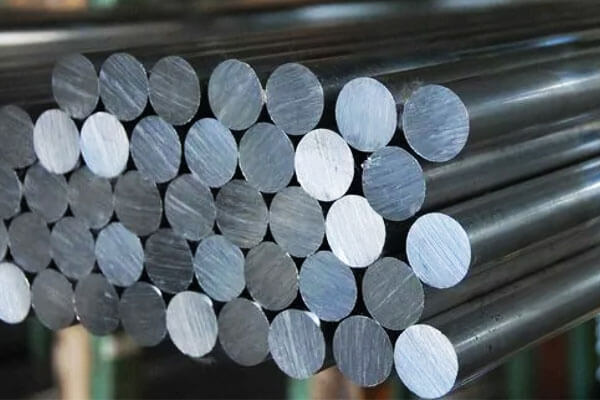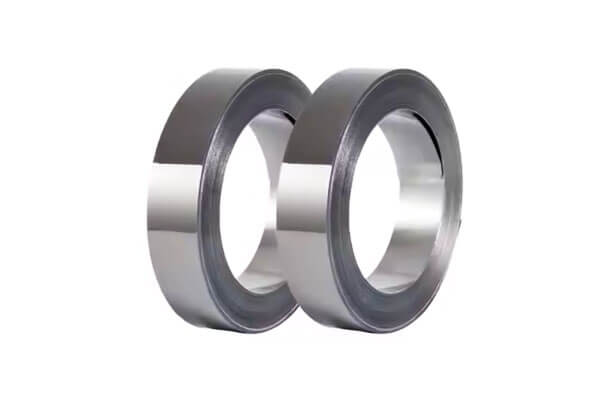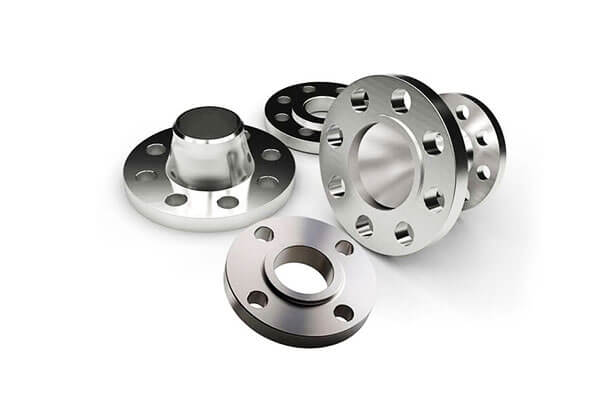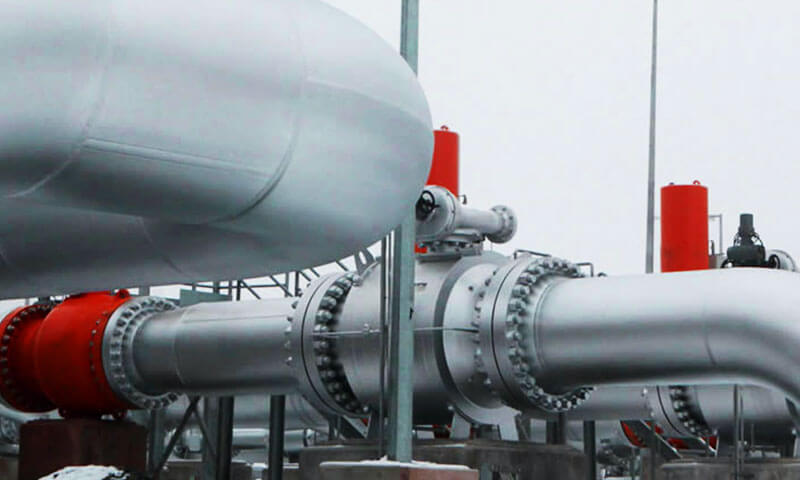1. Увођење
Nickel-based alloys have long been the foundation of high-performance materials used in extreme environments.
Their ability to withstand високе температуре, оксидација, и механичко напрезање makes them indispensable in ваздухопловство, генерација електричне енергије, и индустријске примене.
Међу овим легурама, Легура никла 75 (2.4951) has earned a reputation for its exceptional thermal stability, отпорност на пузање, и отпорност на корозију
Originally developed in the 1940s for the Whittle jet engine turbine blades, this alloy has continued to prove its reliability and versatility Преко више индустрија.
Its unique combination of механичка чврстоћа, топлотна стабилност, и лакоћа израде makes it an attractive choice for applications requiring long-term durability in high-temperature environments.
Овај чланак пружа in-depth technical analysis of Nickel Alloy 75 (2.4951), covering:
- Chemical composition and microstructure, explaining how each element contributes to its superior properties.
- Физички, термички, and mechanical characteristics, detailing its performance under extreme conditions.
- Manufacturing techniques and processing challenges, highlighting the best fabrication methods.
- Industrial applications and economic feasibility, demonstrating its widespread use.
- Future trends and technological advancements, exploring the next phase of alloy development.
By the end of this discussion, readers will have a comprehensive understanding of Alloy 75 and why it remains a preferred material for demanding engineering applications.
2. Хемијски састав и микроструктура
Primary Constituents and Their Functions
Легура никла 75 (2.4951) је а nickel-chromium alloy дизајниран за moderate high-temperature applications.

The following table outlines its key alloying elements and their contributions to material performance:
| Елемент | Састав (%) | Функција |
|---|---|---|
| Никл (У) | Равнотежа (~75.0%) | Provides oxidation and corrosion resistance, ensures thermal stability. |
| Хром (ЦР) | 18.0-21.0% | Enhances oxidation and scaling resistance, strengthens the alloy. |
| Титанијум (Од) | 0.2–0.6% | Stabilizes carbides, improves high-temperature strength. |
| Угљеник (Ц) | 0.08-0,15% | Forms carbides to enhance hardness and creep resistance. |
| Гвожђе (Фе) | ≤5.0% | Adds mechanical strength without compromising corrosion resistance. |
| Силицијум (И), Манган (Мн), Бакар (Цу) | ≤1,0%, ≤1,0%, ≤0.5% | Provide minor processing benefits and oxidation resistance. |
Мицроструцтурал Аналисис
- Тхе ФЦЦ (Кубичан) кристална структура ensures high ductility and fracture toughness, which is essential for thermal cycling applications.
- Titanium and carbon form carbides (Тик, Цруц₃), significantly increasing the alloy’s creep strength at elevated temperatures.
- Microscopic examination (СЗО, TEM, and XRD analysis) confirms that uniform grain structures contribute to improved fatigue resistance.
3. Physical and Thermal Properties
Basic Physical Properties
- Густина: 8.37 Г / цм³
- Опсег топљења: 1340–1380°Ц
- Електрична отпорност: 1.09 mm²/m (higher than stainless steel, making it ideal for heating elements)
Thermal Characteristics
| Имовина | Вредност | Значај |
|---|---|---|
| Топлотна проводљивост | 11.7 W/m·°C | Ensures efficient heat dissipation in high-temperature environments. |
| Специфични топлотни капацитет | 461 J/kg·°C | Improves thermal stability. |
| Коефицијент топлотне експанзије (Цте) | 11.0 µм/м·°Ц (20-100 ° Ц) | Maintains structural integrity under thermal cycling. |
Oxidation Resistance and Thermal Stability
- Sustains oxidation resistance up to 1100°C, making it ideal for gas turbines and exhaust systems.
- Maintains mechanical strength under prolonged high-temperature exposure, reducing the risk of deformation.
Магнетна својства
- Low magnetic permeability (1.014 у 200 Oersted) ensures suitability for applications requiring minimal electromagnetic interference.
4. Mechanical Properties and High-Temperature Performance of Nickel Alloy 75
This section provides a comprehensive analysis of Nickel Alloy 75 механичка својства, behavior under extreme conditions, and testing methodologies to evaluate its long-term performance.
Затезна чврстоћа, Снага приноса, and Elongation
Tensile properties define the alloy’s ability to withstand static and dynamic loading without experiencing permanent deformation or failure.
Легура никла 75 одржава high tensile strength and reasonable ductility across a wide temperature range.

Key Tensile Properties
| Температура (° Ц) | Затезна чврстоћа (МПА) | Снага приноса (МПА) | Издужење (%) |
|---|---|---|---|
| Room Temp (25° Ц) | ~600 | ~275 | ~40 |
| 760° Ц | ~380 | ~190 | ~ 25 |
| 980° Ц | ~120 | ~60 | ~10 |
Запажања:
- High strength at room temperature ensures excellent load-bearing capacity.
- Gradual reduction in tensile strength with increasing temperature is expected due to softening effects.
- Ductility remains sufficient at elevated temperatures, allowing for stress redistribution without brittle failure.
Ова својства чине Легура никла 75 suitable for components exposed to high temperatures and mechanical stress, попут сечива турбине, exhaust ducts, and heat exchanger parts.
Creep Resistance and Long-Term Load Stability
Creep is a critical factor for materials used in континуиране примене на високим температурама. It refers to the slow, time-dependent deformation under constant stress.
The ability to resist creep determines the longevity and reliability од легуре 75 in extreme environments.
Creep Performance Data
| Температура (° Ц) | Стрес (МПА) | Time to 1% Creep Strain (hrs) |
|---|---|---|
| 650° Ц | 250 | ~10,000 |
| 760° Ц | 150 | ~8,000 |
| 870° Ц | 75 | ~5,000 |
Кључни увиди:
- Strong creep resistance at moderate temperatures (650–760°C) extends component lifespan in jet engines and power plant turbines.
- At 870°C, creep rate increases significantly, requiring careful design considerations for prolonged exposure.
- Легура 75 outperforms conventional stainless steels, making it a more reliable choice for high-temperature engineering applications.
To further enhance creep resistance, manufacturers often optimize grain size and perform controlled heat treatments, обезбеђивање microstructural stability during prolonged use.
Fatigue Strength and Fracture Toughness
Fatigue Resistance Under Cyclic Loading
It is a major concern in components subjected to repeated thermal cycling and mechanical stress, such as those in aerospace propulsion systems and gas turbines.
Легура 75 експонати strong fatigue resistance, preventing premature failure due to cyclic loading.
| Температура (° Ц) | Stress Amplitude (МПА) | Cycles to Failure (x10⁶) |
|---|---|---|
| Room Temp (25° Ц) | 350 | ~10 |
| 650° Ц | 250 | ~6 |
| 760° Ц | 180 | ~4 |
Fracture Mechanics and Crack Propagation
Nickel Alloy 75’s fracture toughness is relatively high, спречавање катастрофални неуспех due to crack initiation and propagation.
Међутим, microstructural defects, таложење карбида, and prolonged thermal exposure can influence crack growth rates.
- Intergranular and transgranular fracture modes have been observed in fatigue testing, зависно од temperature and stress levels.
- Optimized grain boundary strengthening techniques (via controlled cooling rates and minor alloying additions) побољшати отпорност на пуцање.
Thermal Stability and Oxidation Resistance
Легура никла 75 је дизајниран за oxidation resistance up to 1100°C, making it suitable for components in combustion environments and high-temperature reactors.
Key Thermal Properties
| Имовина | Вредност | Значај |
|---|---|---|
| Топлотна проводљивост | 11.7 W/m·°C | Allows heat dissipation in high-temperature applications. |
| Специфични топлотни капацитет | 461 J/kg·°C | Ensures thermal stability. |
| Oxidation Limit | 1100° Ц | Provides excellent surface protection. |
| Коефицијент термичке експанзије (20-100 ° Ц) | 11.0 µм/м·°Ц | Reduces thermal stress during heating and cooling cycles. |
Oxidation and Surface Stability
- Хром (18–21%) forms a stable oxide layer, protecting the alloy from high-temperature degradation.
- Low sulfur and phosphorus content minimizes embrittlement in thermal cycling applications.
- Compatible with thermal barrier coatings (ТБЦс) and aluminized coatings to further enhance oxidation resistance.
5. Manufacturing and Processing Technologies of Nickel Alloy 75
Nickel Alloys – Alloy 75 is widely used in high-temperature applications,
necessitating precise manufacturing and processing techniques to maintain its механички интегритет, топлотна стабилност, and oxidation resistance.
This section explores the primary fabrication methods, heat treatment procedures, изазови заваривања,
and surface finishing technologies that enhance the alloy’s performance in demanding environments.
Primary Fabrication Techniques
Manufacturing Nickel Alloy 75 components involves ливење, ковање, котрљање, и машинска обрада, each with specific benefits depending on the application.
Ливење
- Инвестициони ливење is commonly used to produce complex aerospace components, Младе за турбине, and exhaust parts.
- Sand casting and centrifugal casting are preferred for large-scale industrial furnace and heat exchanger components.
- Изазови: High-temperature solidification can lead to shrinkage porosity, захтевајући precision control of cooling rates.
Ковање и ваљање
- Hot forging enhances grain structure and mechanical properties, чинећи га идеалним за load-bearing components.
- Cold rolling is used to manufacture thin sheets and strips, обезбеђивање uniform thickness and surface finish.
- Бенефиције:
-
- Пречишћава структуру зрна → Improves mechanical strength.
- Reduces internal defects → Enhances fatigue resistance.
- Enhances workability → Prepares alloy for subsequent machining.
Machining Characteristics
Легура никла 75 presents умерено обрада difficulty због ње high work hardening rate and toughness.
| Machining Property | Effect on Processing |
|---|---|
| Ворк Харденинг | Cutting speeds must be optimized to minimize tool wear. |
| Топлотна проводљивост (Низак) | Generates excessive heat during machining. |
| Chip Formation | Requires sharp cutting tools with high thermal resistance. |
Best Machining Practices:
- Употреба карбидни или керамички алати за сечење to handle the alloy’s toughness.
- Employ high-pressure coolant systems to manage heat buildup.
- Оптимизујте брзине резања (30-50 м / и) and feed rates to prevent work hardening.

Heat Treatment and Thermal Processing
Heat treatment significantly influences the механичка својства, stress resistance, and microstructural stability of Nickel Alloy 75.
Key Heat Treatment Processes
| Процес | Температура (° Ц) | Сврха |
|---|---|---|
| Враголовање | 980–1065°C | Омекшава материјал, ублажава стрес, and improves workability. |
| Лечење раствором | 980–1080°C | Dissolves carbide precipitates, homogenizes the microstructure. |
| Старење | 650–760°C | Enhances creep resistance and high-temperature strength. |
Heat Treatment Advantages:
- Improves grain refinement, enhancing fatigue strength.
- Reduces internal residual stresses, minimizing distortion in components.
- Појачава отпорност на пузање, ensuring longevity in high-temperature applications.
Welding and Joining Procedures
Легура никла 75 могу се заварити различитим методама, али controlling heat input and preventing carbide precipitation is crucial for maintaining mechanical integrity.
Изазови заваривања:
- Cracking Risk: High thermal expansion increases residual stress and hot cracking susceptibility.
- Oxidation Sensitivity: Захтијева inert gas shielding (Аргон, Helium) to prevent surface contamination.
- Карбидни падавине: Excessive heat input can lead to carbide formation, reducing ductility and toughness.
Препоручене методе заваривања:
| Процес заваривања | Предности | Изазови |
|---|---|---|
| ТИГ заваривање (Гтав) | Прецизна контрола, minimal heat input | Slower than MIG, requires skilled operation. |
| МИГ заваривање (Раскопер) | Брже таложење, good for thick sections | Higher heat input may lead to carbide precipitation. |
| Заваривање електронским снопом (ЕМС) | Дубоко продирање, минимално топлотно изобличење | High equipment cost. |
✔ Најбоља пракса: Термичка обрада након заваривања (Пхт) у 650–760°C до relieve residual stress and prevent cracking.
Површински третмани и премази
Површински третмани побољшати отпорност на оксидацију, отпорност на корозију, and mechanical wear resistance, especially for components in екстремне средине.
Oxidation-Resistant Coatings
- Aluminizing: Forms a protective Al₂O₃ layer, побољшање oxidation resistance up to 1100°C.
- Thermal Barrier Coatings (ТБЦс): Yttria-stabilized zirconia (YSZ) coatings provide топлотна изолација in jet engines.
Заштита од корозије
- Електрополирање: Enhances surface smoothness, reducing stress concentrators.
- Наклоњено: Improves corrosion resistance in marine and chemical processing applications.
Wear-Resistant Coatings
- Plasma Spray Coatings: Додаје а ceramic or carbide layer, reducing surface degradation in окружења високог трења.
- Јонско нитрирање: Hardens the surface for better wear and fatigue resistance.
✔ Најбоља пракса: Selecting coatings based on operating environment (температура, механичко напрезање, и хемијска изложеност) ensures maximum durability.
Quality Control and Testing Methods
To maintain high performance and reliability, Легура никла 75 components undergo strict quality control procedures.
Неразорно тестирање (НДТ)
- X-ray Inspection: Detects internal porosity and voids in cast or welded components.
- Ултразвучно тестирање (Ут): Evaluates subsurface defects without damaging the material.
- Инспекција продирања боје (ДПИ): Identifies surface cracks in turbine blades and aerospace parts.
Мицроструцтурал Аналисис
- Scanning Electron Microscopy (СЗО): Examines grain boundaries and carbide distribution.
- X-ray Diffraction (XRD): Determines phase composition and crystallographic changes након топлотне обраде.
Мецханицал Тестинг
- Затезање (АСТМ Е8): Measures yield strength, крајња затезна чврстоћа, и издужење.
- Тестирање тврдоће (Роцквелл, Вицкерс): Evaluates surface hardness after heat treatment.
- Creep and Fatigue Testing (ASTM E139, E466): Ensures long-term durability under cyclic and static loads.
✔ Најбоља пракса: Implementing a Six Sigma-based quality control system enhances consistency and minimizes defects in high-performance components.
6. Стандарди, Спецификације
Maintaining quality and consistency remains paramount for Alloy 75. Manufacturers adhere to stringent international standards and implement rigorous quality control measures.
Легура 75 meets multiple international standards, укључујући:
Нас: N06075
British Standards (Бс): HR5, HR203, HR403, HR504
DIN Standards: 17742, 17750–17752
ИСО стандарди: 6207, 6208, 9723–9725
AECMA Pr EN Standards
7. Frontier Research and Technological Challenges of Nickel Alloy 75 (2.4951)
Innovations in Alloy Design
Computational Material Science
Recent advancements in машинско учење (Мл) and density functional theory (DFT) револуционишу alloy optimization.
Ово computational models reduce the need for traditional trial-and-error methods and accelerate the development of improved materials.
🔹 A 2023 study by MIT’s Materials Research Laboratory used ML algorithms to refine Alloy 75’s titanium-to-carbon ratio, што резултира а 15% improvement in creep resistance at 900°C.
🔹 DFT simulations predict phase stability under extreme conditions, обезбеђивање better oxidation and fatigue resistance in next-generation applications.
Nano-Engineered Precipitates
Scientists are exploring nano-structuring techniques to enhance the механичка својства of Nickel Alloy 75.
🔹 German Aerospace Center (DLR) has successfully integrated 5–20 nm γ’ (Ni₃Ti) precipitates into the alloy through топло изостатско пресовање (Кук).
🔹 This nano-precipitate formation improves fatigue resistance by 18%, allowing components to endure 100,000+ thermal cycles in jet engines.
Hybrid Alloy Development
Combining Легура никла 75 with ceramic composites is emerging as a next-generation material strategy.
🔹 The European Union’s Horizon 2020 програм is funding research on силицијум карбида (СиЦ) fiber-reinforced versions of Alloy 75, leading to prototypes with 30% higher specific strength at 1,100°C.
🔹 This innovation paves the way for hypersonic aircraft, ultra-efficient turbines, and next-gen propulsion systems.
Додатна производња (У ам) Breakthroughs
Laser Powder Bed Fusion (ЛПБФ) Advancements
3D printing technologies have transformed Легура никла 75 component manufacturing, significantly reducing material waste and lead times.

🔹 GE Additive has successfully 3D-printed turbine blades са 99.7% густина using LPBF.
🔹 Optimized laser parameters (300 W power, 1.2 m/s scan speed) have led to 40% reductions in post-processing costs, while still maintaining ASTM tensile strength standards.
Challenges in Additive Manufacturing
Despite these breakthroughs, residual stress and anisotropic mechanical properties remain major obstacles.
🔹 A 2024 study by the Fraunhofer Institute found 12% variability in yield strength across different build orientations, underscoring the need for post-print heat treatment to homogenize the microstructure.
🔹 Current efforts focus on in-situ process monitoring, ensuring defect-free structures through real-time laser parameter adjustments.
Smart Components and Sensor Integration
Real-Time Condition Monitoring
Интеграција од fiber-optic sensors into Alloy 75 компоненте is unlocking a new era of predictive maintenance and performance tracking.
🔹 Siemens Energy has embedded fiber-optic sensors in Легура никла 75 Младе за турбине, обезбеђивање live data on strain, температура, and oxidation rates.
🔹 This IoT-driven approach has reduced unplanned downtime by 25%, improving efficiency in power generation and aviation sectors.
8. Закључак
Закључак, Nickel Alloy Alloy 75 (2.4951) represents a harmonious blend of chemical precision, physical robustness, и механичку поузданост.
Its evolution from early aerospace turbine blades to indispensable industrial components underscores its enduring value.
As manufacturing techniques advance and research continues to push the boundaries, Легура 75 remains a strategic choice for high-temperature and high-stress applications.
If you’re looking for high-quality Nickel Alloy 75 производи, одабир Ово је савршена одлука за ваше производне потребе.



